California Local reviews the biggest stories of the year.

Kizel Cotiw-an Shutterstock.com
By JONATHAN VANKIN, ERIC JOHNSON and SHARAN STREET
Today begins a new year, and the start of its first month, named after the Roman god Janus. As a guardian of gateways, the two-faced deity looks ahead and behind. Today we take our lead from Janus and peer back at some of the biggest stories of 2023 while simultaneously fixing our attention toward the future.
So many stories California Local covered in the months past will continue to matter in 2024. Who will permanently fill the shoes of the late Dianne Feinstein, California’s longest-serving senator? Which ambitious Central Valley politicians will take aim at Kevin McCarthy’s congressional seat? What challenges lie ahead for Gov. Gavin Newsom’s CARE Courts? Will California’s gun safety laws be gutted by SCOTUS? And most pressing, what consequences of climate change will hit our state the hardest? Will it be fire or rain? Drought or flood? Everything lies ahead. But first, take a few minutes to look back and prepare for the news cycles to come.
 Dianne Feinstein served longer in the United States Senate than any Californian in history. Her death at age 90 set off a scramble to fill her seat, and Gov. Gavin Newsom appointed labor organizer Laphonza Butler to serve the remainder of Feinstein’s term. After less than a month in office, Butler announced that she would not participate in the 2024 race. Under state law, the governor’s appointee holds office until there’s a special election—the winner of that election takes office immediately and serves until the full term begins. Both elections will hold March primaries and November runoffs—a total of four elections. Three U.S. House members, all Democrats, entered the race in February when Feinstein announced she would retire in Jan. 2025: Adam Schiff of Burbank, Irvine’s Katie Porter, and Oakland’s Barbara Lee. But with the top two primary finishers advancing to November, the race for second place is equally important. Former Major League Baseball star Steve Garvey—who played for the Los Angeles Dodgers from 1969 to 1982, then the San Diego Padres until 1987—vaulted into second place despite being a later entry into the race and, more importantly, a Republican. Garvey, per Morning Consult, was at 19 percent support, edging out Porter at 17 percent and Lee who stood at 14 percent. California has not sent a Republican to the U.S. Senate since 1988 when Pete Wilson won a second term, only to resign in 1991 after winning the governor’s race. The special election to fill Wilson’s seat was then won by none other than Dianne Feinstein. (JV)
Dianne Feinstein served longer in the United States Senate than any Californian in history. Her death at age 90 set off a scramble to fill her seat, and Gov. Gavin Newsom appointed labor organizer Laphonza Butler to serve the remainder of Feinstein’s term. After less than a month in office, Butler announced that she would not participate in the 2024 race. Under state law, the governor’s appointee holds office until there’s a special election—the winner of that election takes office immediately and serves until the full term begins. Both elections will hold March primaries and November runoffs—a total of four elections. Three U.S. House members, all Democrats, entered the race in February when Feinstein announced she would retire in Jan. 2025: Adam Schiff of Burbank, Irvine’s Katie Porter, and Oakland’s Barbara Lee. But with the top two primary finishers advancing to November, the race for second place is equally important. Former Major League Baseball star Steve Garvey—who played for the Los Angeles Dodgers from 1969 to 1982, then the San Diego Padres until 1987—vaulted into second place despite being a later entry into the race and, more importantly, a Republican. Garvey, per Morning Consult, was at 19 percent support, edging out Porter at 17 percent and Lee who stood at 14 percent. California has not sent a Republican to the U.S. Senate since 1988 when Pete Wilson won a second term, only to resign in 1991 after winning the governor’s race. The special election to fill Wilson’s seat was then won by none other than Dianne Feinstein. (JV)

The legal upheavals of 2023 for California’s technology sector, it could be said, began in 2022 when Elon Musk purchased Twitter. A 2023 study released in April showed that hateful content doubled on Twitter in the few months that Musk had owned the company. Also in 2023, the Supreme Court took up whether free speech can be regulated online—and SCOTUS punted. California Local reported on the case Gonzalez v. Google, in which the family of a college student murdered by ISIS terrorists alleged that the Google-owned YouTube used its algorithm to push pro-ISIS videos on its users. The case could have mostly eviscerated Section 230, the 27-year-old law that protects online expression. In May, SCOTUS ruled against the family and avoided ruling on Section 230 at all. In July, of course, Musk trashed the Twitter brand altogether and relaunched as “X.” But Musk’s obliteration of Twitter wasn’t even the biggest Silicon Valley problem in 2023. In January, the US Department of Justice sued to force Google to sell off the largest piece of its trillion-dollar business, claiming that its parent company Alphabet, operates as a monopoly. The DOJ wants to force Google to sell Ad Manager, which would pretty much break up the online tech giant. Meta, the parent company of social media’s twin titans Facebook and Instagram, also found itself slapped with a massive lawsuit, this time by the justice departments in 33 states including California. As California Local reported, the states claim that Meta, like the tobacco industry before it, actively deceived the public about the dangers of its products. According to one study, monetizing the personal data of its users brings in more than $30 billion per year for Facebook and Instagram. (JV)
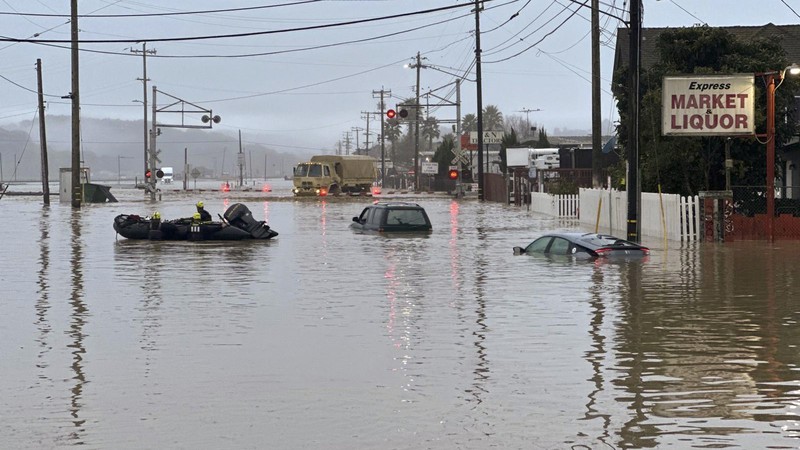
Drought-plagued California found itself in a strange situation in 2023—deluged by storms. Record levels of rain and snowfall from 12 major storms battered the state in early 2023. Then, in August, Hurricane Hilary steamed toward Southern California. Though weakened by the time it hit land, Hilary was still the first tropical storm to touch down in California in 84 years. With climate change intensifying storms, the state is scrambling to get ready for more extraordinary climate events. California is already attempting to make improvements in flood control, but those improvements face resistance from landowners unwilling to make way for new levees farther back from potentially overflowing rivers—often on privately owned land. The state’s suddenly burgeoning budget deficit may also make it difficult to protect against future extreme weather events. Even as the heavy rains continued to pound California, Gov. Gavin Newsom called for $6 billion in cuts to climate-related programs. California has had a program in place since 2015 to aid in predicting atmospheric river storms—the type that caused all the havoc last year. In 2023, the legislature passed a new law expanding that program. So that’s something. (JV)

November marked the five-year anniversary of the Camp Fire, the second-deadliest wildfire in US history (with 2023’s Lahaina Fire being the deadliest), and the Woolsey Fire, which killed three people and cost $6 billion in property damage. As we reported in The Newsletter back in August, while the death toll in Maui was still mounting, all of these megafires are not natural disasters; they are man-made catastrophes caused by the climate crisis and a century of land-management practices that were misguided at best. And here is the remarkable good news: For the first time since the indigenous land stewards were violently driven out of California’s forests, there is an ambitious project underway to treat our wildlands with the care they demand and deserve. The California Wildfire & Forest Resilience Task Force just this month announced a $12 million federal grant to support fuels management projects, and a $15 million state allocation for its Wood Products and Bioenergy Program. All of this is part of a multi-agency, multibillion-dollar effort that could one day undo the vast damage we have witnessed over generations. The two biggest cures both seem ironic: Careful logging and prescribed burns are already thinning the second- and third-growth forests that have become tinderboxes. The bad news is that meanwhile, Californians who are still threatened by wildfire are having trouble getting fire insurance. (EJ)
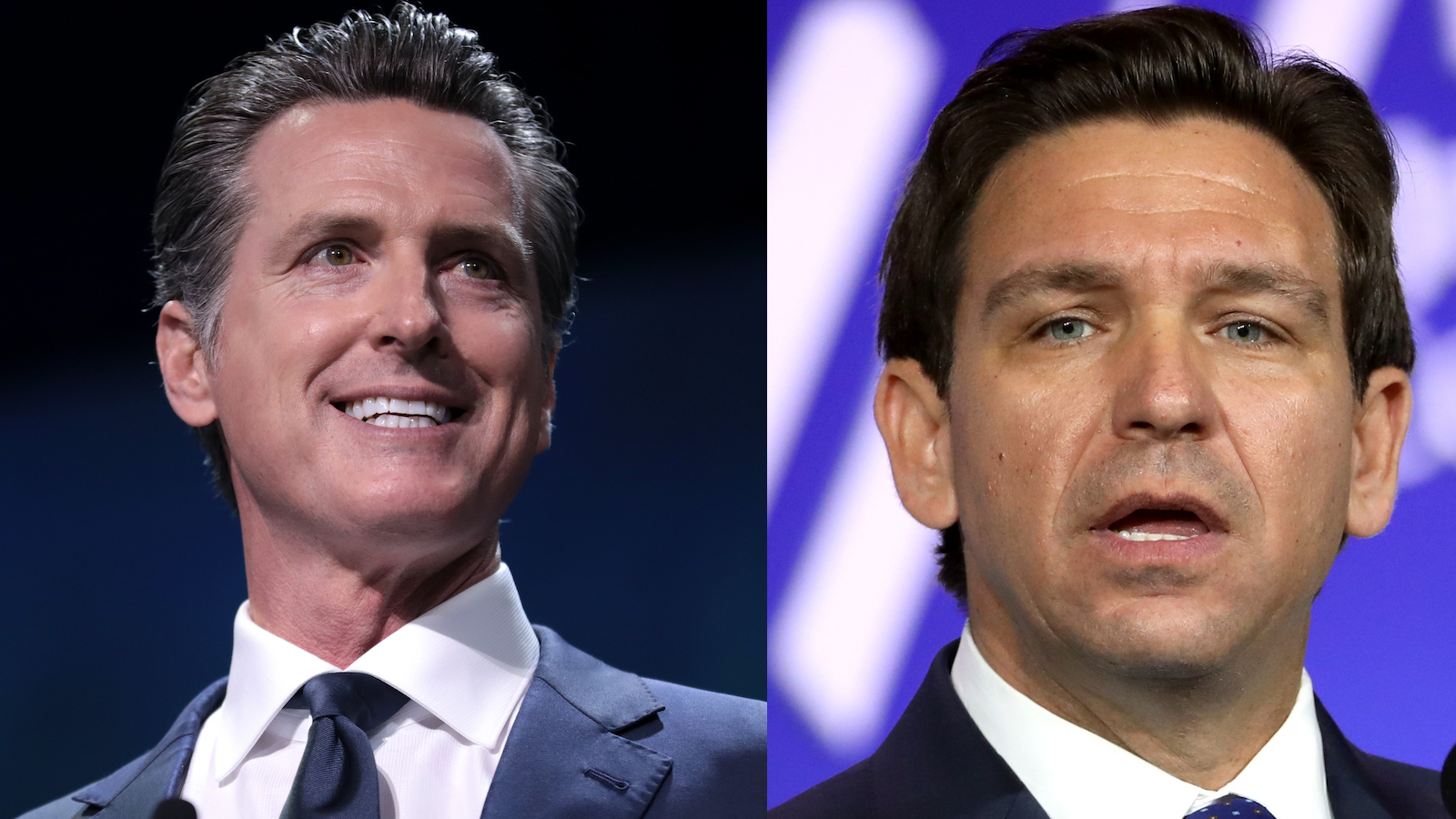
California has not elected a Republican governor since 2006 (Arnold Schwarznegger) or a Republican Senator since 1988 (Pete Wilson). The state’s congressional delegation has been heavily Democratic since 2000, when 20 Republicans won seats in California’s then-55-seat delegation. So it seemed fitting that California’s governor was one of the participants in what was billed as a “Red State Vs. Blue State” debate in November. Gavin Newsom’s opponent in the nationally televised Fox News showdown was Republican Florida Gov. Ron DeSantis—who unlike Newsom is also a candidate in his party’s presidential primary campaign. Newsom and DeSantis covered such topics as Donald Trump, the political leanings of Newsom’s in-laws, and the location of human feces deposited on the streets of San Francisco. Predictably, the “winner” depended on the partisan leaning of the viewer, with Republicans generally claiming victory for DeSantis, and Democrats pronouncing Newsom the clear victor. (JV)

California has a long history of planned cities, places where visionary real estate developers create communities that are supposed to become ideal, even utopian places to live. In 2023, however, the dream quickly turned sour for a group of investors that featured several Silicon Valley tech tycoons. First, their company, known at the time only as Flannery Associates, anonymously bought up 52,000 acres in Solano County that bordered on Travis Air Force Base, which sparked fears that some foreign power was attempting to gain control of the base. Soon, the true identity of the group was made public, and its leader revealed himself as 36-year-old former Goldman Sachs investment banker Jan Sramek. In September, they unveiled a website announcing their parent company’s name, “California Forever,” and their intention to “build a new community that attracts new employers, creates good paying local jobs, builds homes in walkable neighborhoods, leads in environment stewardship, and fuels a growing tax base to serve the county at large.” Local farmers and homeowners did not exactly share Sramek’s optimism. In November he met with a group of Solano residents who pushed back hard against the California Forever proposal. Sramek later claimed that a poll of 10,000 Solano residents showed strong support for the project, and said his group was not going away, after spending almost $1 billion to acquire the land for its envisioned city of 100,000 people. California Forever will be an even hotter political issue in 2024 as the group pushes to get its proposal on the ballot and convince a majority of Solano County voters to make this utopia real. (JV)

Another year, another rising body count, as gun violence continued unabated in 2023. The state of California continues to fare better than most states. But the carnage in 2023 was considerable nonetheless. California suffered 703 gun violence deaths in 2023, according to the Gun Violence Archive (through Dec. 26, excluding criminal suspects who died at the scene of shootings). The Archive recorded 42,377 gun violence deaths in the United States for 2023.
Note that 25 of California’s total gun deaths occurred in just three mass shooting incidents. Though the state saw 49 shootings of four or more people—the accepted definition of “mass” shootings—on a per capita basis, California ranked 20th out of the 50 states for fewest mass shootings, with 1.26 per million residents.
The reason California sees less gun violence than most other states is that it has the nation’s strongest gun-safety laws, but 2023 saw those laws in danger. A federal judge in October reaffirmed his 2022 decision to throw out California’s 34-year-old ban on assault weapons, though the law remains in place pending appeal to the Ninth Circuit U.S. Appellate Court. Then in December a different federal judge blocked a California law that banned carrying concealed firearms in “sensitive places” such as schools, churches, and sporting events.
In 2024, the U.S. Supreme Court is expected to rule in two gun cases. In one, SCOTUS will decide whether suspects in domestic violence cases can be barred from owning firearms. In the other, the court is expected to hear and rule on a case about whether any felons, even those convicted of nonviolent offenses, should be prohibited from gun ownership. (JV)
The scale of California’s homelessness crisis remained staggering in 2023. While the number of unhoused Americans rose 0.4 percent during the COVID-19 pandemic, California’s homeless population swelled by 6.2 percent. Of every 10,000 Californians, 44 were homeless according to the most recent federal government numbers. At the same time, mental health issues continue to be closely related to homelessness. Per federal data, 31 percent of homeless people nationwide reported experiencing “severe” mental illnesses.

In 2023, Gov. Gavin Newsom’s proposal to create a special branch of the court system solely for people with mental health problems became a reality. The system, known as CARE (Community Assistance Recovery and Empowerment) Courts, is designed to mandate treatment for Californians suffering from clinical psychosis. Civil liberties and disability rights groups objected, filing a lawsuit to block the CARE Courts system and asserting it is “based on stigma and stereotypes of people living with mental health disabilities and experiencing homelessness.” The state Supreme Court didn’t see it that way, and in October the CARE Courts opened for business in seven counties: Stanislaus, Tuolumne, Glenn, San Diego, Orange, Riverside and San Francisco. On Dec. 1, Los Angeles County joined the list, with officials there expecting to hear 4,500 petitions in the court’s first year.
By Oct. 1, 2024, all California counties must have a CARE Court system up and running, or face heavy fines and other penalties. But the new courts are only one piece of Newsom’s plan to address the mental health crisis that, to an extent, drives the homelessness crisis. In the March 2024 election, voters will either approve or deny Newsom’s plan to issue a $6.4 billion bond with funds earmarked for 10,000 housing units for homeless individuals experiencing serious mental health issues. Proposition 1 would also redirect funds from the state’s “millionaire’s tax” to build new housing. That piece of the proposed measure has raised fears among mental health advocates that important programs for the mentally ill would suffer cuts. (JV)
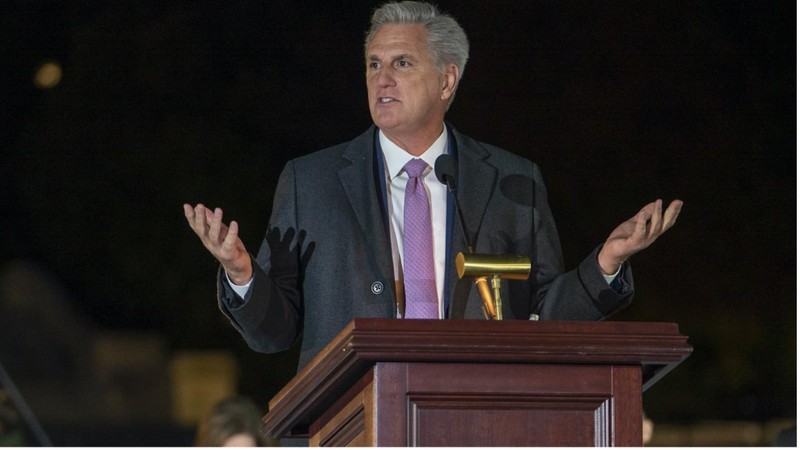 In January of 2023, Bakersfield’s Kevin McCarthy became the most powerful Republican in Congress. Less than 10 months later, he was ousted from his position as Speaker of the U.S. House. Two months later, he announced that he would leave Congress altogether. Candidates immediately began scrambling to declare for the inevitable special election. Bakersfield Assemblymember Vince Fong, McCarthy’s hand-picked successor, had already filed papers to run for reelection, but a Superior Court Judge issued a last-minute ruling Dec. 28 permitting Fong to run for his former boss’s seat despite the double-filing.
In January of 2023, Bakersfield’s Kevin McCarthy became the most powerful Republican in Congress. Less than 10 months later, he was ousted from his position as Speaker of the U.S. House. Two months later, he announced that he would leave Congress altogether. Candidates immediately began scrambling to declare for the inevitable special election. Bakersfield Assemblymember Vince Fong, McCarthy’s hand-picked successor, had already filed papers to run for reelection, but a Superior Court Judge issued a last-minute ruling Dec. 28 permitting Fong to run for his former boss’s seat despite the double-filing.
Bakersfield State Senator Shannon Grove, another enthusiastic Trump supporter and potential front runner, chose to sit this one out. The mayor of California City, Kelly Craig Kulikoff, and Tulare County Sheriff Mike Boudreau, both Republicans, both declared their candidacies, as did former Navy fighter pilot Matt Stoll, who ran two failed congressional elections in 2022. (JV)

Just as Amazon’s vast network of mega-warehouses, trucks, robots, drones etc., has obliterated the real-world retail ecosystem, the logistics industry (which includes all of the above) has exploded. As Jon Vankin reported in his article “Logistics in California: the Most Important Part of the State Economy You’ve Never Heard Of,” there are almost 10,000 warehouses covering 55,000 acres in the Inland Empire. The transportation, warehousing and utilities sector in San Joaquin County grew by a stunning 74.3 percent over five recent years. And in Kern County, million-square-foot warehouses are sprouting in farm fields. It appears almost certain that this rural county will now get what its Central Valley neighbors to the north and south have seen as the logistics industry moves in: Low-paying jobs, roads clogged with trucks, and increased diesel-exhaust pollution. On the other hand, with Kern County’s oilfields doomed as California breaks its addiction to fossil fuels, and its farms threatened as groundwater dries up, maybe those warehouse jobs will be welcome. (EJ)

As California teachers struggled to get students back on track, with English language arts and math test scores still lagging behind pre-pandemic levels, the state legislature passed some bills that could have positive effects. Assembly Bill 873, sponsored by Marc Berman (D-Menlo Park), requires “that all pupils in California be prepared with media literacy skills necessary to safely, responsibly and critically consume and use social media and other forms of media.” CalMatters reporter Carolyn Jones examined ways in which teachers and librarians could help students recognize fake news and think critically about what they find online—skills that couldn’t be more relevant in a hype-filled presidential election year. And to address the fact that only 40% of California high schools offer computer science classes, the Legislature also passed Assembly Bill 1215, which creates a commission to streamline the process of credentialing computer science teachers. Unfortunately, another Berman-sponsored bill—AB 1054, which would mandate computer science classes in high schools—fell into the suspense file. (SS)
Reporters on the education beat were kept on their toes in 2023 as opponents of LGBTQ rights weaponized angry parents and tested the limits of California’s local control system, which gives school boards leeway to enact their own policies. From Chino Valley Unified School District in and the Temecula Valley Unified School District in San Bernardino and Riverside counties to the Rocklin Unified School Board in Placer County, a handful of school boards created policies that require school staff to inform parents if their children self-identify with a gender that differs from their assigned sex at birth. Attorney General Rob Bonta’s response: a lawsuit that argues the policy violates California’s constitutional right to privacy and its equal protection clause. Bonta’s action wasn’t the only pushback from the state: Gov. Gavin Newsom signed nine bills that support California’s LGBTQ citizens of all ages. (SS)
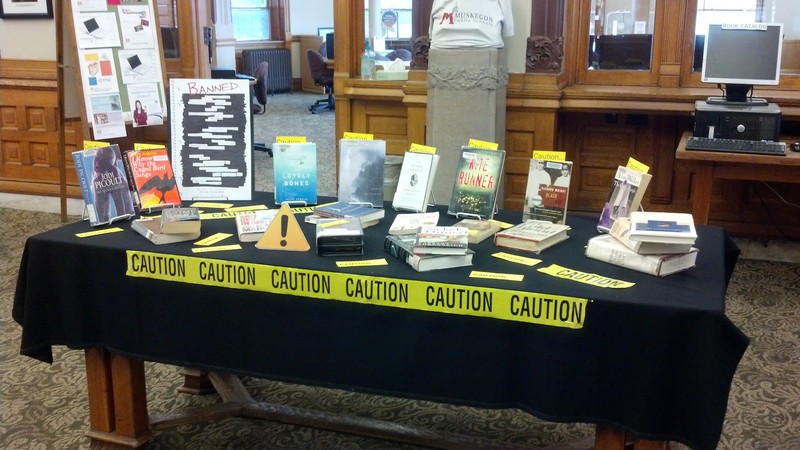
Rather than adding specific material or course requirements to California schools, Assembly Bill 1078 instead looks to prevent school boards from subtracting books. California is the most diverse state in the country, and as such its education code requires schools to address those diverse experiences in curriculum. AB 1078, as CalMatters’ Carolyn Jones reports, prevents board members from banning books based solely on the inclusion of history or culture of racial, ethnic or LGBTQ groups. Despite (or because of) its laudable goal to ensure diversity, equity and inclusion, not everyone is a fan. The California School Boards Association opposed the bill, for its potential to incite tension between the state and local school boards. Tension, however, can come from within.
Just this month, in Placer County, the Auburn Union School District board of trustees voted on whether to rescind its Diversity, Equity and Inclusion Statement. Gold Country Media reporter Traci Newell reported on the meeting, which drew a crowd in support of keeping the statement. After a 3-2 vote, the statement stayed. Advocating to kill it was board President Greg Holt, who opined that DEI statements “have a tendency towards lowering or eliminating standards.”
During the discussion, trustee Sarah Brichler, one of the champions of the DEI statement, noted that she would not run for reelection in November 2024—and she encouraged someone in the “energized community” to consider a run for her seat. So come November, pay attention to those school board elections. Read the campaign statements—but remember, it’s even more revealing to follow school board coverage in your local newspaper. (SS)
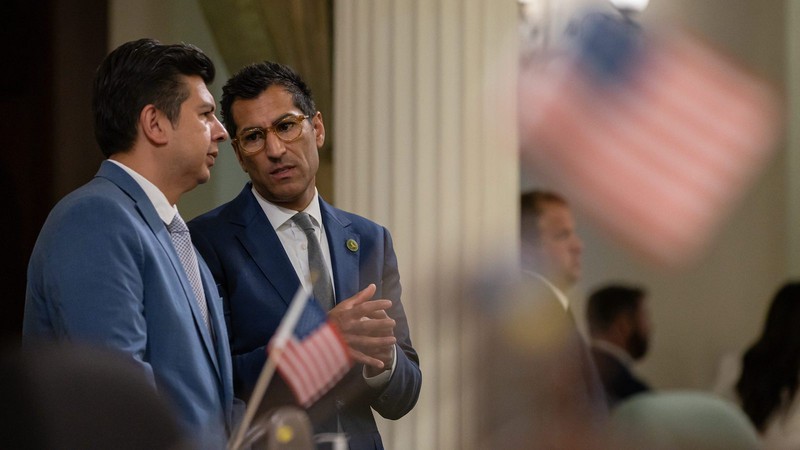
Throughout 2023, cities around California struggled to draw up plans for the current cycle in Regional Housing Needs Assessments—a daunting task given the push and pull between the dire need for affordable housing and the fierce desires of local residents to preserve neighborhood character. Against this backdrop, state legislators got aggressive, passing bills that create what CalMatters reporter Ben Christopher described as “a welcome mat for most major affordable housing projects across the state.” In 2024, support for affordable housing should be even stronger under new Assembly Speaker Robert Rivas, who placed YIMBY activists in many leadership positions. California Local’s Jonathan Vankin took a different approach in looking at California’s homelessness crisis, where “Housing First” policies have failed while similar efforts succeeded in Houston, which has no zoning laws. In a separate article, Vankin explores the assertion that zoning laws “create segregation, inequality and unsustainability.” (SS)
Article exploring songs, books, movies and other works from art and culture which feature our beautiful state.